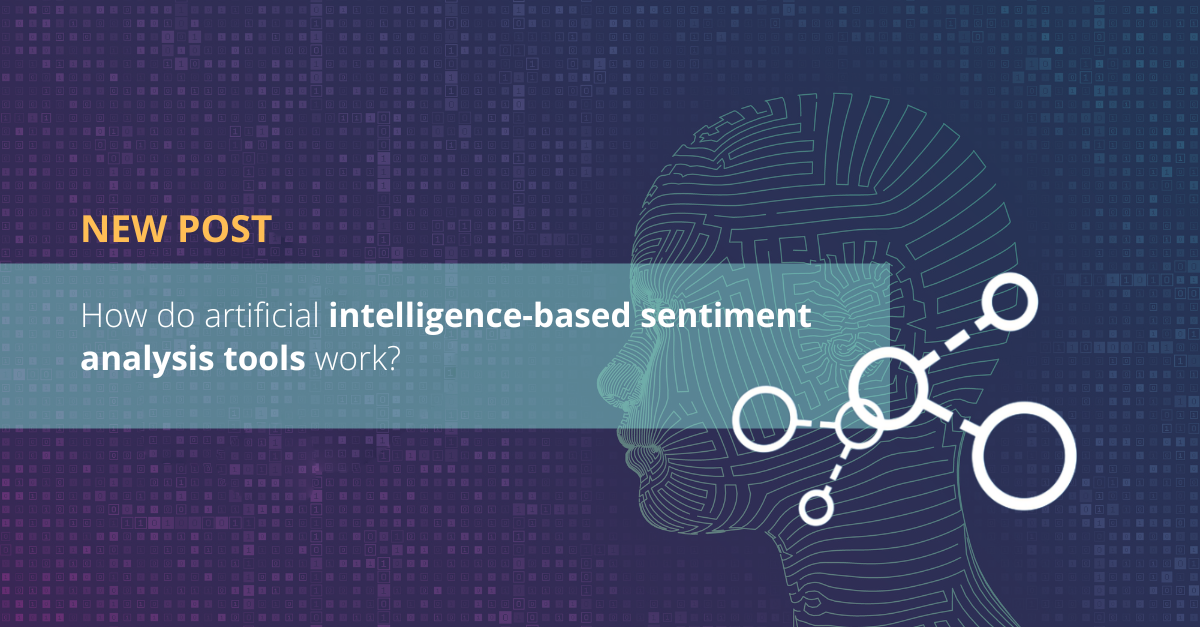Sometimes, when we see a message, a critique or review, or receive a document from a customer, it is not clear if it is a joke, has a hidden intention or if it is ironic. Does this situation sound familiar? Most probably yes, since it is very difficult to determine what the sender really means, unless they clearly communicate the intention of a message, which is not always possible. When it comes to communication between different languages, everything is even more complicated, as there is no universal way of conveying sarcasm, irony or double entendres, rather it varies from language to language or dialect to dialect.
Sentiment analysis tools have been developed in order to solve this problem; a type of software that analyzes texts of all types and evaluates the underlying tone, intent or emotion of each message. These applications can be very useful for marketing, advertising or translation professionals.
Key aspects of a sentiment analysis tool
In order to get a feel of the market and be able to monitor and track what users think about a brand or company, it is necessary to resort to some kind of computerized customer sentiment analysis tool.
This type of software automatically identifies the emotional tone of comments on social networks, user platforms, and product reviews. To achieve this, they use artificial intelligence (AI) and Big Data techniques, which allow them to obtain information very quickly and in real time from large volumes of user and customer data.
These applications act as sentiment analyzers to automatically detect emotions and opinions and generate text ratings based on various parameters.
To perform sentiment analysis of a text, these applications combine two areas of AI: natural language processing (NLP) and machine learning. NLP applies syntactic and semantic techniques to understand the structure of a text and identify its meaning. Once processed with these techniques, the text is classified with machine learning algorithms, based on similar examples.
Types of sentiment analysis
The sentiment of a message or text document can be analyzed in several ways:
- Polarized analysis. It consists of polarizing an opinion towards something positive, negative or neutral. This is the most well-known type of sentiment analysis used by companies.
- Emotion recognition. Using sophisticated and complex AI techniques, the intrinsic emotions of text can be detected and analyzed, based on algorithms that take into account cultural issues, nuances, double entendres, irony, sarcasm, etc.
- Aspect-based. This type of sentiment analysis is used to detect and highlight which features or aspects of a product or service customers are attaching most importance to.
- Intent analysis. These tools are used to gain a deeper understanding of customer intent, in order to detect a behavioral pattern and then use it in new marketing and advertising campaigns.
Featured content: How to make the most of AI-based translation: pros and cons
The main sentiment analysis applications
These are some of the most effective online sentiment analysis applications known and used in the current market:
HubSpot's Service Hub
An application that includes high-level features related, above all, to automatic surveys. It highlights an analysis tool that breaks down qualitative survey responses and evaluates them for positive or negative intentions.
Brandwatch
A very helpful tool for analyzing what is being said about a brand on social media, which helps to make the right decisions related to the information. In addition, it provides its clients with detailed reports and a customized dashboard on the company's social media activity.
Lexalytics
A tool that provides advanced text analysis solutions software, including: company information, sentiment analysis, semantic evaluation, and syntax and context analysis.
Talkwalker
In addition to the usual functions, this application provides the ability to research and make trend predictions, which helps companies develop new messages, products and ideas orientated towards pleasing the audience.
Hootsuite Insights
This tool is not limited to monitoring and analyzing mentions of your brand or company on social media; it also accesses conversations on news pages, blogs, photos and other public places. It includes graphs to better organize and understand all the information.
Pangeanic, a leading company in translation automation and language processing, has developed Pangea Sentiment Analysis Tool, a high-quality proprietary tool, which we will go further into in the following section.
You might be interested in: Discover the latest trends in the translation industry
Pangeanic, the best choice for sentiment analysis
Pangea Sentiment Analysis Tool is a very efficient tool for extracting positive or negative sentiments from any written text. It stands out for being highly customizable, so it can be adjusted to detect particular emotions such as disgust, pleasure, fear, anger, etc., even in non-structured texts.
This tool's great flexibility allows you to analyze anything from sentences to very long documents, including batches of text. In addition, it is very versatile, so it can be used for other purposes such as ranking opinions or predicting review ratings.




